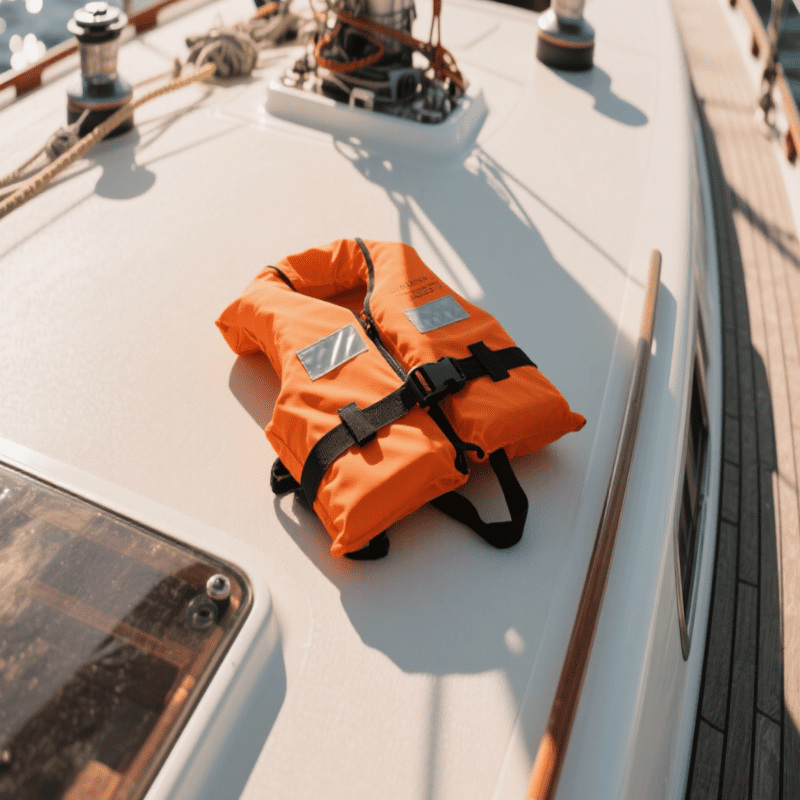Life Vest
1.The Main Role of CO₂ Cylinders in Life Jackets:
The CO₂ cylinder serves as the "power source" for the rapid inflation of life jackets and plays a crucial role in their functionality. When a person falls into the water and pulls the inflation mechanism or triggers the automatic inflation system, the valve of the CO₂ cylinder opens. The high-pressure liquid CO₂ inside rapidly vaporizes, and a large volume of gas inflates the life jacket within seconds, providing substantial buoyancy and ensuring that the wearer’s head stays above water to prevent drowning. The weight of the CO₂ cylinder directly influences the buoyancy performance and inflation speed of the life jacket. Larger capacity cylinders offer more durable and stable buoyancy and faster inflation efficiency, making them ideal for high-risk environments such as offshore work or swift water conditions. Smaller cylinders, being lightweight and portable, are suited for water sports where agility is important, offering reliable life protection for users with different needs.
2.Choosing the Right CO₂ Cylinder:
When selecting a CO₂ cylinder for a life jacket, the weight of the cylinder is a crucial parameter, as it directly affects the life jacket’s buoyancy performance, inflation speed, and portability. Understanding the significance of cylinder weight will help you choose the life jacket that best meets your needs.
① Choosing Based on Buoyancy:
Generally, the heavier the CO₂ cylinder, the more CO₂ it can store, and the greater the buoyancy of the life jacket when inflated. Common CO₂ cylinder weights include 25g, 33g, and 38g. A 25g cylinder is typically used for children’s life jackets or in water sports scenarios where weight sensitivity is important. It provides enough buoyancy to keep children or smaller adults afloat in the water. A 33g cylinder is a common configuration for adult life jackets and provides stable and sufficient buoyancy for most adults in typical water environments. Cylinders of 60g and above are better suited for high-risk environments such as offshore work or long-haul voyages. They ensure the life jacket maintains strong buoyancy for an extended period, providing safety in extreme weather or complex sea conditions.
② Choosing Based on Inflation Speed:
Larger CO₂ cylinders, due to their higher gas storage capacity, can inflate the life jacket more quickly when the valve is opened. For activities such as white-water rafting or surfing, where sudden danger can arise, a 33g or larger cylinder can inflate the life jacket within 3-5 seconds, creating a protective barrier to prevent the wearer from being swept away by the current or choking on water. Smaller cylinders, while inflating more slowly, are lighter and more portable, making them suitable for water sports enthusiasts who prioritize flexibility, such as windsurfing or kayaking. These cylinders reduce the equipment load, enhancing the overall sporting experience.
③ Choosing Based on Portability:
If you need to wear a life jacket for extended periods or frequently carry it, a lighter CO₂ cylinder will be more advantageous. A 25g or 33g cylinder keeps the overall weight of the life jacket low when uninflated, making it comfortable to wear without feeling overly cumbersome. In contrast, larger 60g cylinders make the life jacket heavier, which is suitable for situations where buoyancy longevity is more important than weight. For example, crew members on fishing vessels may require life jackets with reliable buoyancy for long durations at sea.

